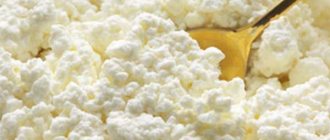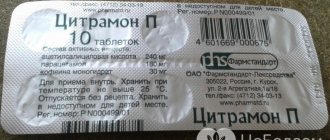Regardless of the method of use of the drug, traces of it in the body are detected after a few days. Knowing how long a drug will stay in the blood will help you avoid getting into an unpleasant situation when taking tests or making sure that a loved one regularly takes illegal drugs. The timing of withdrawal is influenced by several factors, primarily the type of drug and its quantity.
How long does it stay in the blood?
The maximum concentration of methadone in human blood is observed 3 hours after oral administration. About 80% of the drug is bound by blood particles - albumin. After taking one first dose, a qualitative reaction will show the presence of the drug in the plasma after 24 hours.
Methadone remains in the blood for two half-lives:
- When a single dose of the drug enters the body, the duration of its partial elimination will be 14 hours, and the remainder is eliminated from the blood after 28 hours;
- With regular use of the drug, due to the accumulation of the substance, the half-life reaches 22 hours.
Methadone dissolves in lipid substances in the body, so it easily enters the bloodstream from the digestive tract. The breakdown of the drug occurs in the liver. After first entering this organ, methadone undergoes a complex metabolism. Without obstacles it binds to proteins in the blood plasma and is easily absorbed by body tissues:
- Liver,
- Respiratory organs,
- Spleen,
- Organs of the urinary system.
The content of methadone in these organs is higher than in the bloodstream. The substance is active when in the blood and may end up in the brain. A person feels the effects of a drug only after it enters the bloodstream.
Methadone metabolic products are excreted from the body through feces and urine. Up to 10% of unabsorbed substance taken orally is also excreted through bowel movements and urination. The substance is found in saliva and sweat. High content is observed in gastric juice. During pregnancy, the content of the drug in placental blood reaches 50% of the concentration in maternal blood. The half-life of methadone is 12 to 18 hours.
Detection of a narcotic substance in the blood is carried out in the following ways:
- Chemical-toxicological analysis - confirms drug use if no more than 72 hours have passed since the last dose;
- Quarterly analysis – makes it possible to confirm the fact of drug use up to 4 months ago.
Why is LSD harmful?
The main harm of LSD is that it can greatly distort the worldview for some time. In this state, a person is capable of causing injury to himself or others, especially while driving or at work, where quick reactions and increased attention are required. Under the influence of the substance, there often arises an awareness of great strength and power, while the addict is able to go outside through the balcony, because he believes that he can fly. In the same way, he can be hit by a car on the roadway.
There is another danger after taking such a substance. One in four people who use LSD experience an unexpected return to the state they were in while taking the drug. This is called a flashback. It is not known for certain what can cause such a phenomenon, but it is believed that in this way the ability of the psyche to restore a number of past events is realized, especially those moments that caused the most vivid impressions. This can be quite dangerous, since this condition occurs suddenly, regardless of what the person is doing or where he is.
There is no evidence to support the physical changes in the body that LSD causes. It also does not cause physical dependence. Tolerance to the drug can last for a fairly short period - up to three days.
The substance is especially dangerous when consumed by pregnant women, as it can cause premature birth or miscarriage by stimulating uterine contractility.
Sometimes some people compare the psychedelic effects that psilocybin mushrooms cause. LSD has a more pronounced effect, reminiscent of acute schizophrenia, and acts as a stimulant on the body. Mushrooms, just like this substance, are pronounced psychedelics, but have a milder effect on the body and cause sedation.
LSD is a fairly expensive psychotropic drug. It is sold in the form of microtablets or stamps (pieces of paper impregnated with a substance). A drug like LSD costs about 500 rubles per dose in Moscow. In other cities its price may be lower. Since the dosage to obtain the effect of this drug is very small, its smuggling is much easier than any other potent drugs.
Sometimes some people compare the psychedelic effects that psilocybin mushrooms cause. LSD has a more pronounced effect, reminiscent of acute schizophrenia, and acts as a stimulant on the body. Mushrooms, just like this substance, are pronounced psychedelics, but have a milder effect on the body and cause sedation.
How to speed up elimination from the body at home
The rate of complete elimination of the drug from the human body depends on the following indicators:
- State of human health and immune system;
- Presence of liver diseases (hepatitis due to intoxication, cirrhosis);
- Presence of renal failure;
- Speed of blood circulation - when blood flow is slow, natural detoxification occurs more slowly;
- Metabolic rate – in the presence of hypothyroidism, the elimination of toxins is delayed;
- The amount of adipose tissue in the body - methadone tends to accumulate in the fat “depot”, which is why its presence in the drug addict’s body is delayed;
- Systematic dosage - the higher the dose used by the drug addict, the longer the body takes to eliminate it.
The retention of methadone in the body is provoked by the parallel use of sleeping pills, anticonvulsants, antibiotics and tranquilizers. Taking a decoction of St. John's wort also prolongs the elimination of methadone.
To speed up drug elimination at home, the following detoxification measures are taken:
- Drink plenty of fluids – you need to drink at least 2.5 liters of clean water per day;
- To stop the absorption of the drug, gastric lavage is done;
- Sorbents, laxatives and diuretics will help speed up the cleansing of the body to prevent the reabsorption of toxins;
- Taking vitamin complexes to support and strengthen the immune system;
- Dietary food: completely eliminate harmful foods, focus on slow carbohydrates, fruits, vegetables;
- Moderate physical activity: walks in the fresh air, simple exercises in the morning. During physical activity, metabolism accelerates and the removal of toxins from the body.
Duration of decay of narcotic substances
In addition to the above reasons, the rate of disintegration and release of dope from the body is also influenced by what kind of drug a person has used. Each drug has an individual destructive effect and its own decay time.
Some drugs leave the human body after 2-3 hours, while others remain in the body for months or even years.
The following table will help you roughly determine how long on average a particular drug is retained (for example, how long cocaine leaves the body):
| Drug | Description | Blood | Urine | Hair |
| psychotropic cannabis | substance made from Indian hemp (hashish, marijuana) | 1.5-2 weeks | 25-30 days | 2-3 months |
| cocaine | alkaloid, has a crystalline form (crack) or powder | 35-40 hours | 3-4 days | 3-3.5 months |
| LSD (lysergic acid) | semi-synthetic potent psychotropic substance | 2.5-3 hours | 2-3 days | 2-3 days |
| ecstasy (MDMA tablets) | synthetic psychoactive substance from the phenylethylamine group | 1.5-2 days | 3.5-4 days | 2.5-3 months |
| heroin (diacetylmorphine) | semi-synthetic opioid drug | 10-12 hours | 4.5-5 days | 2-3 weeks |
| amphetamine (phenamine) | strong central nervous system stimulant, phenylethylamine derivative | 20-24 hours | 2-3 days | 3-3.5 weeks |
| methamphetamine (MET) | crystalline amphetamine derivative | 1-1.5 days | 4-5 days | 80-90 days |
Each drug remains in the human body for a different time. It is this fact: how long drugs last in the urine, circulatory system or hair that is used by doctors to detect the presence of narcotic substances.
Detoxification in hospital
Inpatient detoxification is carried out using the following methods:
- Treatment with drugs;
- Hardware treatment;
- The fastest way is UBOD.
Drug treatment
Medication detoxification is the most common method. Drugs are introduced into the patient’s body to ensure accelerated drug clearance:
- Naloxone, Naltrexone;
- Droppers and intravenous fluids are prescribed to speed up recovery;
- Medicines are prescribed to normalize the function of affected systems and organs;
- Supportive therapies are prescribed.
Treatment with medications is carried out for 7-10 days in a row. At the same time, the patient is given medications to generally strengthen the body.
Medication treatments are not prescribed to patients with severe illnesses, life-threatening infections, or to women during pregnancy.
Hardware therapy
The technique is used as an auxiliary treatment or as the main method of therapy when a drug addict cannot undergo drug treatment due to contraindications. The hardware method involves several types of cleansing the body of methadone:
Plasmapheresis is the separation of blood cells from plasma, which contains toxins, then the purified elements are returned to the bloodstream, and the contaminated plasma is disposed of; Hemodialysis is the extrarenal purification of blood from toxic substances; Hemosorption is blood purification using sorbents.
The choice of a specific method is selected by a narcologist. As a result of therapy, methadone withdrawal disappears gradually; it takes time. Hardware treatment is most often used for advanced and long-term addiction. If the addict has a long history of using methadone (more than 3 years), this method is used in conjunction with drug detoxification.
UBOD
UBOD is a method of emergency cleansing of the body to accelerate the fight against signs of withdrawal syndrome and intoxication in case of overdose. Treatment duration is 6-8 hours. UBOD implies the following actions:
- The patient is given anesthesia to prevent severe withdrawal symptoms;
- Methadone antidotes are administered: naloxone, naltrexone;
- Additionally, hemodialysis or plasmapheresis procedures are used;
- After recovering from anesthesia, the patient feels general malaise and weakness.
The advantage of the method is the appearance of a temporary decrease in craving for drugs (encoding effect). Disadvantage: treatment is expensive.
Natural cleansing of the body
Natural purification is chosen in cases where methods of accelerating the elimination of methadone are impossible or contraindicated. During treatment, the patient is in the hospital under the supervision of doctors. The consequences of methadone addiction are stopped gradually, and the body recovers on its own. It will take several weeks for complete cleaning.
Bibliography:
- A popular reference book on methadone for doctors and other healthcare professionals.
- Features of the course of combined poisoning with “Street” methadone.
- Factors influencing the effectiveness of methadone substitution therapy.
- Author Julia Sambros
Editor Artyom Emelyanenko
How does LSD work?
LSD is a psychedelic substance. The entire biological process of its effect on the human body has not been fully studied, but it is reliably known that it, like serotonin, has an effect on dopamine and serotonin receptors, thereby causing certain sensations.
The effect of LSD is called a trip. Its duration can last from 6 to 12 hours, reaching a peak after 1-2 hours, then it lasts from 3 to 5 hours, after which it begins to decline. The impact depends on the individual and can vary greatly in each individual case. In the absence of preparation for taking the drug, as well as being in an unusual or unfriendly atmosphere, a trip can cause unpleasant sensations.
Visual effects caused by LSD can be very diverse and consist of changes in the perception of sound, the size and volume of surrounding things, distortion of colors and people. Even with your eyes closed, colorful visions arise; the situation seems to be floating and undergoing constant changes. A person is bursting with an influx of energy, improved mood, and his associative thinking intensifies. In general, the trip itself most often resembles a pronounced attack of schizophrenia.
Against the background of a feeling of strangeness and unusualness of the situation, a feeling of peace appears, an experience of spiritual revelation. Many experience a transformation in their personality.
If we talk about purely physiological reactions, then the following is usually observed:
- Temperature increase;
- Increased salivation and sweating;
- Increased peripheral reflexes;
- Pupil dilation;
- Nausea and dizziness;
- Emotional instability;
- Transient color blindness.
Occasionally there may be reactions in which there is difficulty breathing, a state of panic, paranoid ideas, and pressure surges.
LSD withdrawal syndrome is not particularly pronounced; it occurs a day after use and consists of a decrease in activity and a feeling of weakness.
A person can reproduce in detail everything that was imagined during a trip for quite a long time; after exposure to this psychedelic, no memory loss is noted.
There is an opinion among some experts that the extraordinary effects of using LSD can be used in medical practice by psychologists and narcologists. A person in a trip state can independently increase his self-esteem, reconsider his fears and complexes, and he becomes aware of his problems. Also of interest is the pronounced analgesic effect of the substance for use in patients with severe pain.
LSD is synthesized from lysergic acid, which is released from the ergot fungus that grows and parasitizes cereal plants. For such a synthesis it is necessary to have special laboratory conditions, fully equipped. The main production of illegal LSD occurs in countries such as the USA and Canada.
We recommend reading: Storing Beans
If we compare LSD with other drugs, mescaline gives the closest hallucinogenic sensations, but its effect is much less expressive in terms of color and other sensations.
Since the effects of LSD can be unpredictable, it cannot be ruled out that it can cause harm to humans.
History of origin
The drug was invented in 1937 by German scientists. After 5 years, a drug called “Amidon” went on sale in pharmacies under the guise of an analgesic. It was produced in the form of tablets or syrup. It was assumed that methadone would become a high-quality replacement for morphine. The popularity of the drug was brought by its convenient method of use and clearly expressed effect.
It was initially used for experimental purposes, but after extensive testing, methadone began to be widely used in medical practice from the late 40s. Determination of the dose of methadone was carried out strictly under the supervision of doctors.
The results from using the drug exceeded all expectations, but in the late 70s the first cases of methadone overdose appeared, which led to death. It ceased to be just a medicine and a remedy for pain, it leaked out of hospitals and onto the streets. Uncontrolled use of the drug caused addiction and death.
Consequences of use
Photo.
How does a person change after systematically using methadone for 9 months? When hooked on it, a person expects the following unpleasant consequences:
- Kidney failure
- Reproductive problems
- Decreased potency
- Development of cardiovascular diseases
- Liver diseases (hepatitis, cirrhosis)
- Suffocation
- Pulmonary edema
Test conditions
Another interesting topic. Everyone knows that the test procedure is medical. Accordingly, compliance with certain conditions and the availability of certain equipment will be required.
It is not necessary to draw blood for the test. Urine, saliva and hair are suitable. Sometimes drugs can be detected even in swabs from objects that the patient held in his hands.
In order to take a urine or blood sample, you need a medical specialist, containers and equipment. And more items for transportation. Storage conditions must also be observed. The procedure is expensive and time-consuming, so sometimes they just take hair or saliva; it’s easier, faster, and it’s not necessary to involve doctors.
Diagnosis and treatment of methadone addiction
In Krasnodar, any person with a drug addiction can undergo high-quality treatment and get rid of the addiction forever. This process depends on how long the addict has been using methadone. It is almost impossible to cope with this disease on your own.
Rehabilitation consists of the following stages:
- Getting rid of withdrawal symptoms - treatment is impossible during withdrawal; you must wait until it passes.
- Detox the body, take medications, communicate with a psychotherapist.
- Social adaptation - after rehabilitation, former drug addicts withdraw into themselves or communicate only with people like themselves.
An important point is the sincere desire of the drug addict to eradicate the craving for drugs. Internal motivation is a reliable guide on the path to recovery.
If you or someone close to you is faced with methadone addiction, do not put off going to a rehabilitation clinic under any circumstances. In Krasnodar, you will receive the necessary tests and receive qualified assistance. You will receive comprehensive treatment, moral support and, as a result, a happy drug-free life.
What is methadone
Methadone is an opioid, a substance of synthetic origin. It first appeared in the early 30s of the XX century. In those days, the drug methadone was used as a painkiller. Today in some countries it is used in drug treatment clinics to treat heroin addiction.
Methadone is popular among drug addicts. It differs from heroin in its simple production method, low cost and does not require intravenous administration. There is a common misconception that methadone is less harmful. For this reason, many drug addicts switch to it from heroin in order to get rid of their addiction. Such self-medication is quite dangerous and does not bring results.
Methadone is considered the cause of death of many famous people, for example, Kurt Cobain or model Anna Nicole Smith.
According to statistics, in Krasnodar approximately 5,000 people regularly use drugs, of which about 7% are minors.
The substance is prohibited in Russia, but in Krasnodar it can easily be obtained on the black market.
There are two ways to use the drug:
- Orally - the substance is available in powder or tablets. Just dissolve the powder in water.
- Intravenously is the favorite method of experienced drug addicts. These injections usually contain impurities that are very dangerous. Dependence on intravenous use occurs quite quickly.
Methadone, unlike heroin or cocaine, cannot be snorted or smoked.










